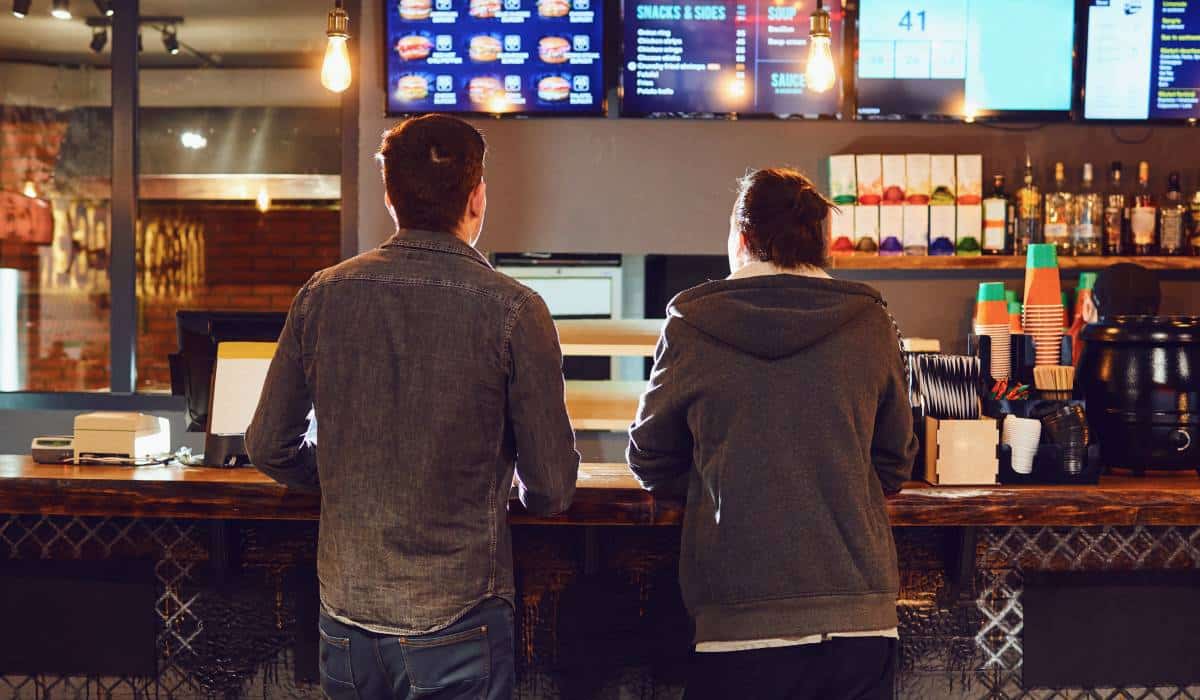While restaurants have been taking steps to rebound from the impact of COVID-19, it’s apparent the pandemic’s effects can still be felt by operators nearly two years later, as front of house (FOH) challenges surrounding labor shortages and changing consumer expectations continue to leave restaurants scrambling.
The operators winning the fight have been the ones open to implementing innovative technology solutions to aid in keeping staff healthy, happy, and productive while serving customers. From QR code-based menus to robotic delivery methods, technology has proven to be an indispensable resource to bolster FOH operations.
Now, the adage of “it costs less to keep a customer than obtain a new one” rings true. The industry must look to new tools and technologies that go beyond just shoring up operations but support FOH staff in providing the premium service customers are looking for to keep them coming back through the door.
Biometric technology, such as facial recognition, offers this exact benefit. Today, it ensures restaurants are running safely by equipping entrances with health screenings to detect masks are not only being worn, but being worn properly, and temperatures are normal and not encroaching fever range. In the near future, this technology will be used to increase patron loyalty by improving staff’s understanding of customers so they can create a more personalized experience — even in the new age of contactless service.
Enhancing the VIP Treatment
Today’s consumers value personalized experiences with their favorite restaurants. Everyone wants the VIP treatment, especially regulars. Facial recognition programs are making it easier for restaurants to do this, even when short staffed. VIP’s who have enrolled in the loyalty program and opted-in to using facial recognition can instantly be recognized upon entering the restaurant. In fact, certain integrations allow a customer’s profile to instantaneously pop up on a FOH computer or handheld device. Employees can use the technology to greet customers by name, ask how they’ve been since their last visit a few weeks ago, and offer to get their usual order started.
Once it comes time for them to pay, a rewards profile is automatically loaded — eliminating the need for an app or loyalty card — and any discounts a customer is eligible for are automatically added to the bill. They can easily pay on their phone without having to wait in line at a cash register or wait for the bill.
Already, this type of technology is being deployed in restaurants. Operators report their employees enjoy having the added insights while customers relish the special perks and personalized service they receive each visit.
Elevating the Self-Service Kiosk
As restaurants feel the pinch of the labor shortage, many are rolling out self-service kiosks for ordering to refocus staff to areas requiring more skill, such as menu creation, marketing, and more. While some have expressed worry that replacing human beings with technology removes an element of valued social interaction from the service, in many cases technology actually enhances the experience. By reinforcing ordering kiosks with facial recognition, servers can see the human behind the order, empowering them to check on the guest and provide follow up service, rather than standing at the computer. These attentive and customized interactions transform customers into friends and turn them from a once-in-a-while patron into a regular for life.
Furthermore, FRT allows the advanced system to offer personalized menu choices, suggest new menu items, and offer add-ons in the way a human never could, using key information like past purchases, demographics, or even the weather outside. For example, if someone typically purchases a kid’s meal but has not ordered one this time, the system might ask if they’re forgetting anything. Similarly, if they always get a particular milkshake flavor, it might suggest a new but similar flavor to try this time. It can also pull up the customer’s past purchases for one-touch reordering, boosting the convenience factor.
Empowering Operators with Knowledge
Not only does facial recognition technology offer benefits for retaining customers and improving the customer experience, but the possibilities for facial recognition in the future stand to offer an immense amount of information and valuable insights to the operator.
Soon, facial recognition will help operators understand how customers truly feel about their food and the service from the moment they sit down to eat to the time they stand-up to leave by anonymizing and aggregating the emotional responses of diners. For example, if a restaurant is testing a new dish, facial recognition could be used to assess the customers reactions to each bite to help them understand if it should become a menu staple or if it needs more refinement.
This helps operators enhance and adjust their menu and service swiftly to ensure money and resources are spent in the right areas and increase the likelihood of customers coming back for more.
We’ve entered an age where personalization is everything, and the most successful restaurants will be those willing to harness technology and automation, not to replace human service, but to enhance it. Data will eventually allow restaurants to service the needs of their customers before an order even comes out of their mouth. Through technology like facial recognition, restaurants of the future can seamlessly maintain efficient FOH operations, and most importantly, offer more personalized dining experiences for guests.
Richard Carriere is the Senior Vice-President & General Manager of CyberLink, a world leader in facial recognition technology. He leads worldwide marketing, overseeing branding, strategy, communications, and web commerce. He also manages the Company’s US operations. Richard holds a master’s degree of Business Administration from the Amos Tuck School at Dartmouth College. He also graduated from the London Business School and the Université de Montréal.






